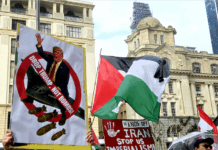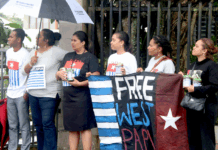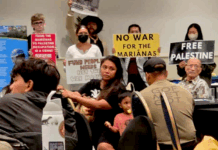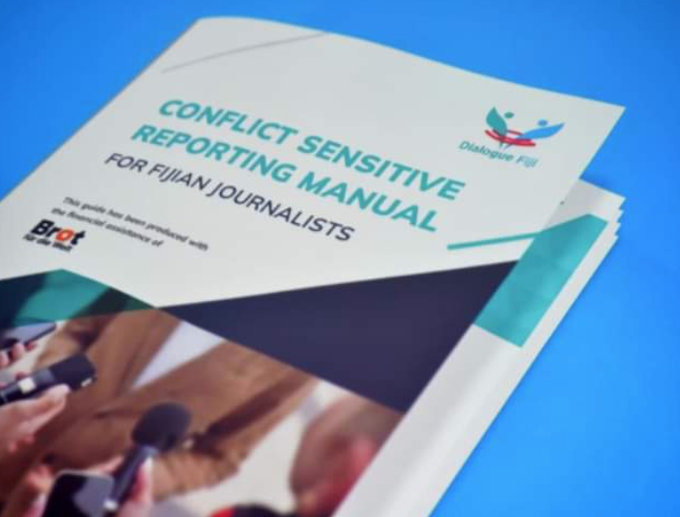
By Shailendra Bahadur Singh in Suva
Conflict and insufficient social cohesion are the biggest challenges in Fiji, and all and any efforts to mitigate and address this situation are laudable.
The research literature posits that while news media can exacerbate social and political conflicts through their reporting styles and focus, they also have the potential to alleviate tense situations by adopting conducive, conflict resolution methodologies.
The Conflict-Sensitive Reporting Manual for Fijian Journalists includes guidelines to approach and report conflicts in a responsible manner by, among other things, conducting the requisite research, and avoiding unnecessarily inflammatory tones.
Dialogue Fiji is the most active civil society in the “social cohesion” space and besides this manual, it published the proceedings of its first symposium on social cohesion in 2017 entitled Ethnic Relations in Fiji: Threats and Opportunities.
The book, which I co-edited with Dialogue Fiji executive director Nilesh Lal, not only highlighted the challenges of social cohesion in Fiji, but also the reservoir of goodwill in our communities, despite everything that we have been through together.
More than 50 years after independence we are still struggling with social cohesion, not the least because it is a complex problem given our context, with no overnight solutions.
The problem requires commitment from every sector of our nation, the news media being no exception.
National media’s contribution
In this regard, conflict-sensitive reporting can be seen as the national media’s contribution to social cohesion and nation-building.
To understand how conflict-sensitive reporting can contribute positively, we first need to look at the media-conflict dynamic, that is, how media conventionally report conflicts.
According to critics, most violent conflicts are “rooted in resource or land disputes, but fought with strong references to ethnic, cultural, and religious identities”.
The news media tend to focus on the manifestations of conflict, such as the tensions, violence, and damage, rather than the root causes, or possible solutions to any disputes. This lopsided approach risks feeding prejudices and fueling misconceptions.
Conflict-sensitive reporting, on the other hand, takes a nuanced approach to the coverage of conflicts, in that it does not regard conflict as run-of-the mill, daily news reporting round, but something that needs extra care and attention.
Conflict-sensitive reporting is an informed and considered approach, based on a commitment to understanding the roots of a conflict and reporting in an in-depth and circumspect manner.
The idea is to not only “do no harm” but report stories with the aim of facilitating solutions to conflict.
Fair and balanced?
It should be pointed that conflict-sensitive reporting is an idea that is not fully accepted in the news media fraternity, which has traditionally espoused reporting the “facts” in a fair and balanced manner. But what is “fair”, “balanced” and “objective” is in itself heavily debated in the news media sector.
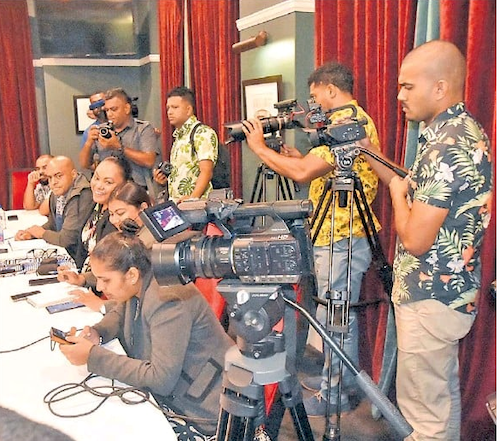
As a university journalism programme, we at the University of the South Pacific are open to researching and experimenting with new and innovative concepts like conflict-sensitive reporting.
The framework has been designed for developing countries with multiethnic communities at greater risk of conflict, than societies with greater ethnic homogeneity.
Such countries are highly susceptible to movement towards civil conflict and/or repressive rule. If this sounds familiar, it is because “civil conflict and repressive rule” have been very much part of our existence in Fiji.
Fiji, mired in ethnic tensions and political differences culminating in four coups fits the description of “fragile” or “vulnerable” societies”.
Media have described Fiji’s coups as “short-lived”, “clean-up-campaign” or “coup-to-end all coups.”
This terminology is regrettable because it grossly underestimates the lingering, sustained, pervasive and long-term damage of our coup culture.
Infrastructure deficit
For example, research published by professors Biman Prasad and Paresh Narayan in 2008 indicates a 20-year infrastructure deficit of $3.4 billion partly due to instability.
Likewise, Professor Wadan Narsey in his 2013 article estimates that by 2011, Fiji had lost $1700 million because of the 2006 coup alone.
This included $400 million in government revenue, which could have been used in education, health, infrastructure and public debt repayments.
Because of just a few deaths due to the four coups in Fiji, media often describe these upheavals as “bloodless coups”.
However, in social and economic terms, the coups caused a bloodbath.
The expression “death by a thousand cuts” comes to mind. We do not feel the pain immediately because after the initial shock, there are smaller aftershocks that we feel and absorb over the course of years and decades.
In time, these repeated blows add up to inflict deeper wounds that are more difficult to heal, but we adjust to the pain, normalise it, and learn to live with our situation, especially the poor and disadvantaged, who face the brunt of it.
Low life expectancy
In Fiji these wounds are manifest in the lack of services, dilapidated infrastructure, low life expectancy, lack of opportunities, low employment and high crime, brain drain, and so forth.
Fiji gives meaning to renowned author Paul Collier’s words: “Wars and coups are not tea parties: they are development in reverse”.
Some of the key underlying causes of our lack of progress are the lack of social cohesion and national unity, which equal unrealised potential.
Since the 1980s there has been idle talk of turning Fiji into a Singapore, and more recently, political chatter about Fiji surpassing Australia and New Zealand
In my opinion, this is a pipe dream unless and until we get social cohesion right, learn to resolve our differences without guns, and move together as a united force.
This requires leadership and vision from the government, support and selflessness from citizens and professionalism and responsibility from the news media, with regards to taking it on themselves to understand the national context, and tailor their coverage accordingly
This is an edited version of Associate Professor Shailendra Bahadur Singh’s launch address for Dialogue Fiji’s Conflict Sensitive Reporting Manual for Fijian Journalists on 8 August 2023 at the University of the South Pacific in Suva, Fiji. It was also first published in The Fiji Times.





